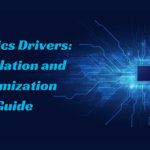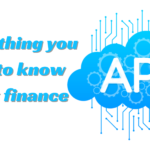Deciphering Generative AI Pricing: Strategies, Challenges, and Market Dynamics
- 1 Understanding Generative AI
- 1.1 The Importance of Pricing in Generative AI
- 1.2 Key Factors Influencing Generative AI Pricing
- 1.3 Pricing Models in Generative AI
- 1.4 Challenges in Generative AI Pricing
- 1.5 Market Dynamics and Generative AI Pricing
- 1.6 Case Studies: Generative AI Pricing in Action
- 2 Conclusion
Generative AI stands as a revolutionary technology, ushering in a new era across diverse sectors, ranging from content creation to image generation. Its remarkable versatility has sparked an unprecedented demand, underscoring the need to unravel the intricate pricing strategies and dynamic forces at play within this swiftly evolving domain. In the following article, we embark on a comprehensive exploration of generative AI pricing, delving into the subtleties, hurdles, and market influences that govern the price tags of these cutting-edge innovations.
Understanding Generative AI
Generative AI, standing as a unique realm within artificial intelligence, specializes in the art of creating content, data, or media that exudes a captivating blend of originality and creativity, frequently leaving observers unable to distinguish between human-crafted and AI-generated material. This domain draws its strength from state-of-the-art methodologies like neural networks and deep learning, enabling it to fashion a diverse array of outputs spanning text, images, videos, music, and beyond. Notable instances of generative AI in action encompass GPT-3, an expert in natural language generation, and deep convolutional generative adversarial networks (DCGANs), proficient in conjuring striking images from the digital canvas.
The Importance of Pricing in Generative AI

Pricing plays a pivotal role in the adoption and proliferation of generative AI technologies. For businesses and organizations, understanding generative AI pricing is essential for budget planning and ensuring a return on investment. Pricing strategies need to balance the cost of development, research, and infrastructure with the value that generative AI provides to users.
Key Factors Influencing Generative AI Pricing
Several factors influence the pricing of generative AI solutions:
- Model Complexity: The complexity of the generative AI model is a significant determinant of pricing. More advanced models with larger neural architectures and better performance capabilities typically command higher prices.
- Training Data and Resources: The quality and quantity of training data, as well as the computational resources required for training, directly impact pricing. Access to extensive datasets and powerful hardware can drive up costs.
- Use Case Specificity: Generative AI models tailored for specific industries or use cases often come at a premium. Customization and fine-tuning for specialized tasks increase the overall cost.
- Performance Metrics: Generative AI pricing may also be influenced by performance metrics such as accuracy, speed, and reliability. Models that offer superior performance typically charge higher fees.
- Licensing and Usage Terms: Vendors may offer different licensing and usage terms, such as pay-per-use, subscription-based, or one-time purchase options. These terms can affect the overall cost of using generative AI.
Pricing Models in Generative AI
Generative AI pricing models can vary significantly, depending on the vendor and the specific application.
Here are some common pricing models:
- Subscription-Based Pricing: Many generative AI platforms offer subscription plans, where users pay a recurring fee based on usage, the number of API calls, or the level of access to the platform’s features.
- Pay-Per-Use Pricing: Some providers implement a pay-as-you-go model, where users are billed based on the number of generated outputs, processing time, or other usage metrics.
- Enterprise Licensing: Enterprises may opt for customized licensing agreements, where they negotiate terms and pricing based on their unique requirements, volume, and usage patterns.
- Free Tier and Freemium Models: Some generative AI providers offer free tiers or freemium models that allow users to access basic functionality for free while charging for premium features or higher usage limits.
- One-Time Purchase: In some cases, users may have the option to make a one-time purchase of a generative AI model or software package.
Challenges in Generative AI Pricing

Navigating generative AI pricing can be challenging due to several factors:
- Lack of Standardization: The absence of industry-standard pricing models and benchmarks makes it difficult for users to assess the fairness of pricing.
- Price Discrimination: Generative AI providers may employ price discrimination strategies, charging different prices to different customer segments based on their willingness to pay.
- Hidden Costs: Users may encounter hidden costs related to data storage, API usage, and infrastructure, which can significantly impact the overall cost.
- Rapid Advancements: The generative AI field is evolving rapidly, with new models and techniques emerging frequently. Pricing models must adapt to keep pace with advancements.
- Ethical Considerations: The use of generative AI in potentially controversial or harmful applications can raise ethical concerns that may affect pricing decisions.
Market Dynamics and Generative AI Pricing
The generative AI market is dynamic and competitive, with numerous vendors vying for market share.
Market dynamics play a crucial role in shaping pricing strategies:
- Competition: Intense competition among generative AI providers can drive down prices as vendors strive to offer better value and capture a larger customer base.
- Innovation: Ongoing innovation in generative AI leads to the development of more efficient and cost-effective models, influencing pricing trends.
- Market Demand: High demand for generative AI across various industries can lead to price inflation, as vendors capitalize on the growing need for these solutions.
- Industry-Specific Pricing: Some industries may have unique pricing dynamics due to specialized use cases and requirements, impacting the cost of generative AI solutions.
- Regulatory Environment: Changes in regulations and ethical guidelines may also affect pricing strategies, especially in industries with stringent compliance requirements.
Case Studies: Generative AI Pricing in Action
To illustrate generative AI pricing in action, let’s consider a few case studies:
- Content Generation Platform: A content generation platform offers a subscription-based pricing model, with tiered plans based on the number of articles generated per month. Higher-tier plans include advanced customization options and access to premium templates.
- Image Synthesis Software: An image synthesis software provider offers a pay-per-use model, charging users based on the number of images generated and the resolution of the images. They also offer a free tier with limited features.
- Financial Forecasting Tool: A financial forecasting tool vendor offers enterprise licensing agreements to banks and financial institutions. Pricing is negotiated based on the volume of financial data processed and the level of customization required.
- Creative Design Tool: A creative design tool offers a one-time purchase option for individual users, allowing them to own the software outright. They also offer a subscription plan for businesses that includes ongoing updates and support.
Conclusion
Generative AI pricing is a multifaceted and evolving aspect of the AI industry. It is influenced by factors like model complexity, training data, use case specificity, performance metrics, and licensing terms. Users must navigate various pricing models, including subscription-based, pay-per-use, enterprise licensing, freemium, and one-time purchase options.
Challenges such as price discrimination, hidden costs, and rapid advancements make pricing assessment complex. Market dynamics, competition, innovation, market demand, and regulatory considerations further shape the pricing landscape. To make informed decisions, businesses and organizations must carefully evaluate generative AI pricing strategies, considering their unique needs and objectives in this transformative technology landscape.


















